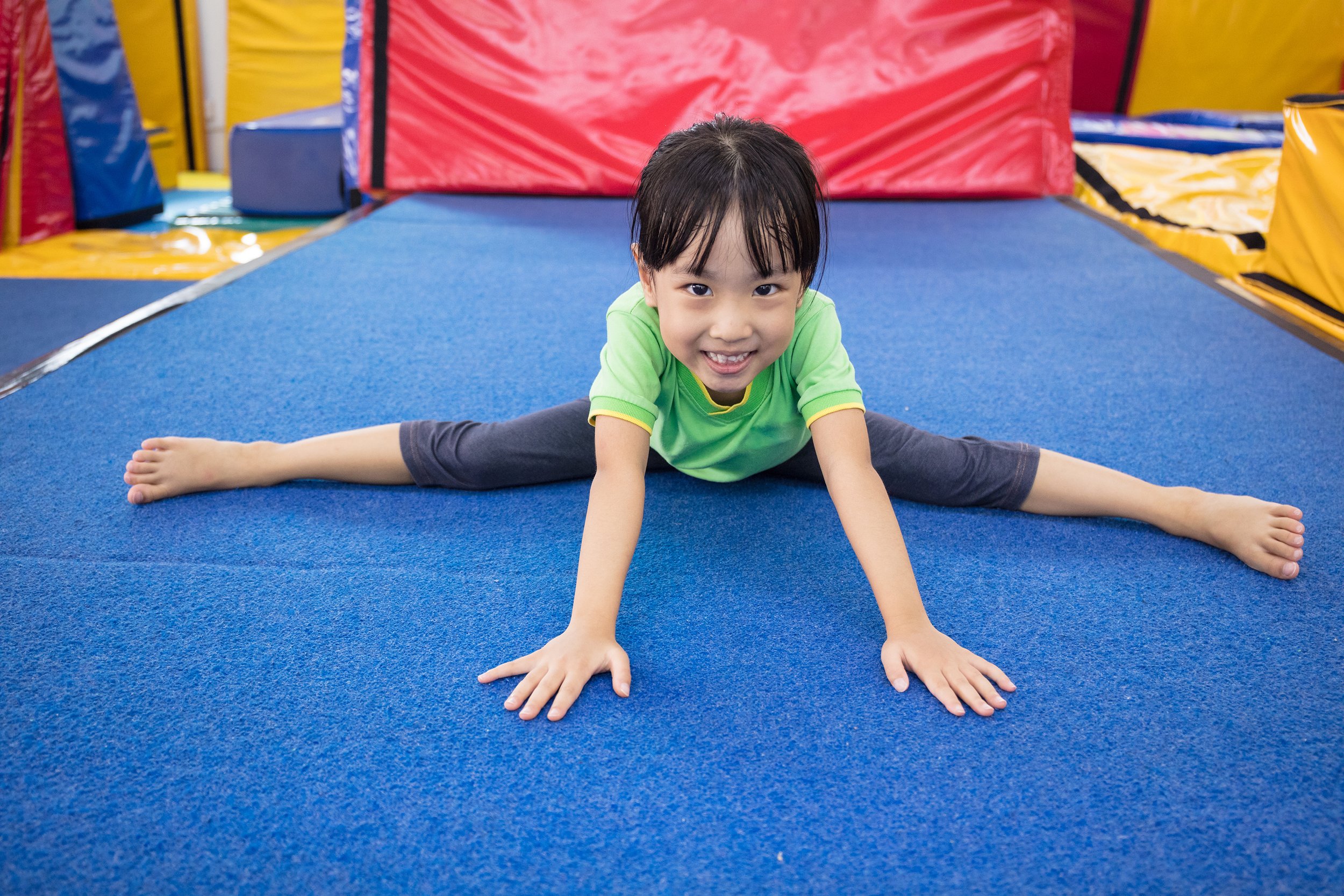
PRESCHOOL
a separate area for our youngest students!
PRESCHOOL DEVELOPMENT
For children from 3 years to 5 years
This is the age that they are not with their parent/guardian during class. Our Preschool Gym can be seen entirely from our lobby, so you can always be close to your little one! Preschool Development classes focus on basic motor development, social development, and of course fun! Classes are 45 minutes long. Please see our Class Schedule for Class Times, and be sure to call the office for availability.
TODDLER
TIME
For children walking to 3 years
Toddler Time is a parent/guardian participation program, and max enrollment is 8 children per class. A parent or guardian must participate. Parents may have an infant with them during class (other than the student), but once the child who is not enrolled is mobile, please sign them up for a class! Classes are 45 minutes long.
Please see our Class Schedule for Class Times, and be sure to call the office for availability.
No getting trampled on by the big kids!
20 REASONS YOUR PRESCHOOLER SHOULD DO GYMNASTICS
(THAT HAVE NOTHING TO DO WITH LEARNING GYMNASTICS)
In addition to it being a lot of fun, here are twenty reasons your preschool aged child should do gymnastics that have nothing to do with learning gymnastics.
-
Learning to leave your parent or caregiver in the lobby while you go into class is the beginning of learning how to separate before a child goes to school. The ability to adjust to new situations is an important part of a preschoolers’ education.
-
Gymnastics teaches kids to follow multi-stepped directions. Going around the obstacle course and remember what to do at each station is far more than gymnastics training.
-
Gymnastics teaches kids to follow multi-stepped directions. Going around the obstacle course and remember what to do at each station is far more than gymnastics training.
-
No one likes waiting, especially 3, 4 and 5 year olds! Practicing standing in line for short periods of time and containing your excitement as you wait for your turn on the trampoline are just a couple ways gymnastics teaches patience.
-
From partner drills to moving a mat together, gymnastics teaches kids to work together for a common purpose.
-
Learning to put your carpet spot or cartwheel mat back into a pile is an important skill and one that many parents will be grateful to have their preschooler master next time there are Legos all over the house!
-
It’s not easy when you don’t get to be first. Or you don’t get the pink poly spot. Or you are unable to stand next to your favorite friend in line. Gymnastics teaches these lessons and helps children learn appropriate ways to resolve their conflicts.
-
Learning to have good manners and speak in a way that is respectful is an important skill for preschoolers to learn. Gymnastics class helps a child learn to treat the teacher with respect and how to navigate social dynamics with their preschool peers.
-
Gymnasts must try and try again to achieve even the simplest of skills. Gymnastics teaches kids to stay with an activity until it’s completed.
-
Combining listening, respect for rules and patience leads to discipline. When a child has the basics of discipline, self-discipline is the next step: the ability to self-regulate behavior.
-
Gymnastics is the basis of all sports. The building blocks for athletic pursuits down the line are laid in gymnastics.
-
Young gymnasts learn how to ask for help from their coach and their classmates.
-
Inevitably another child will learn a skill more quickly, run a race faster or be chosen to lead the line for the day, and your preschooler will not like it. Gymnastics class gives your child an opportunity to cope with those yucky feelings and express them appropriately.
-
Gymnastics stresses the importance of doing the right thing, even when the teacher isn’t looking. Preschool gymnasts begin developing this important skill in class.
-
A four-year-old falling down and getting back up while trying to master a cartwheel is learning resilience, the capacity to recover quickly from difficulties.
-
When you learn to keep trying in order to achieve a goal, it is called grit. Educators around the nation understand the relationship between achievement and grit. Watching that same resilient four year old persist at learning a cartwheel is laying the groundwork for a child who possesses grit.
-
Gymnastics is not an easy sport. However, if children try hard they will see progress. They will understand the relationship between effort and success.
-
Setting lofty goals and believing that you have the capacity to reach them is the core of what it means to ambitious. Watching older kids fly around the gym and thinking that someday, if you work hard, that you can do that too, is the beginning of ambition.
-
Gymnastics can be a scary sport. It is when we face something that pushes us out of our comfort zone that we have the opportunity to develop courage. Courage is not only being brave when we fear something but it is also a trait we can call upon when we have to do something that we do not wish to do, like chores or homework, all things that preschooler will be learning to cope with in the not-too-distant future.
-
Is it any wonder that a child who develops all of these traits also develops self-confidence? Self-confidence is, simply put, your belief in yourself. If you are able to do class on your own, following the rules and directions, getting along with your peers, understanding that you are an able learner and that failing is ok because you are ambitious, have courage and grit is it any surprise that you are self-confident?




